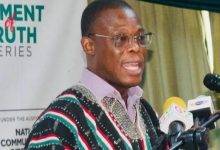Water is so important for everyday life in households and the workplace that lack of it means uncomfortable life.
Imagine being thirsty for hours without the hope of getting water to drink anytime soon or a water-closet place of convenience without water to keep it in order.
These are some of the water-related reasons why most communities were in the past built near water sources.
In those days water was so easily accessed and in its abundance that hardly would any community cry over lack of it; if anything at all, it was the distance between one community or another and the water source.
Those were the days the communities protected the water sources from pollution and from harsh climatic impact.
Thus, their vegetation cover was left intact.
In those days there was not much pressure on the government to supply many communities with water.
Today, expansion of settlements and environmentally-negative human activities have caused some water sources of old to dry up, making it imperative for the government to supply many communities with water, particularly urban areas.
This means acquisition of machinery and other equipment to put in place a system for the government to be able to connect communities to water sources.
Even when this is done, other problems arise such as some communities not getting water at all because they are not connected; others are connected but not getting water or are getting it on rationing basis.
The importance of water is such that any effort by the government to supply water to communities should be lauded as an encouragement to spur it on to do more.
On Friday, the Minister of Sanitation and Water Resources, Madam Cecilia Abena Dapaah, was in Parliament to tell the people’s representatives the efforts of the government in fixing the water supply problems in the country.
Some of the measures are utilising the Kpong Siemens and Kpong New Water Treatment plants to pump a total of 7.9 million gallons through the Dodowa corridor to serve the eastern part of Accra.
The minister mentioned other interventions being implemented in the water sector across the country to improve water supply.
They include replacement of weak pipelines, installation of Automatic Voltage Regulators to stabilise power supply at the plants and rehabilitation of gravity and filters to reduce water treatment losses to improve efficiency of water filtration process at production stations.
The minister also said the government’s efforts were meant to achieve its agenda of ‘water for all’, an agenda which shares the target of UN Sustainable Development Goal 6 (SDG 6) to make water and sanitation available for everyone on the globe by 2030.
This was one of the 17SDGs of the 2030 Agenda adopted by world leaders in September 2015 at a UN Summit but officially came into force on January 1, 2016.
Ghana then has just about eight years to achieve that agenda, but looking at the statistics now, it means the country has to double efforts in the water sector to be able achieve this noble vision.
The Ghanaian Times is making that assertion because the minister said the government could supply only 192 million gallons of urban water out of 249 million needed daily.
This can be supported with a 2019 data which states that the country’s national water supply is 26.9 per cent and that its urban and rural supplies stand at 44 per cent and 6.7 per cent respectively.
Efforts in the water and sanitation sector would fail if the government ignores the role the public would play to ensure success.
This is why the Ghanaian Times wishes to encourage the Ministry of Sanitation and Water Resources to sustain intensive public education on the need to conserve water.
However, this paper wishes to add that the campaign should not focus on conservation of water but also the preservation of its sources.
After all, you can only conserve water only when you have it.



